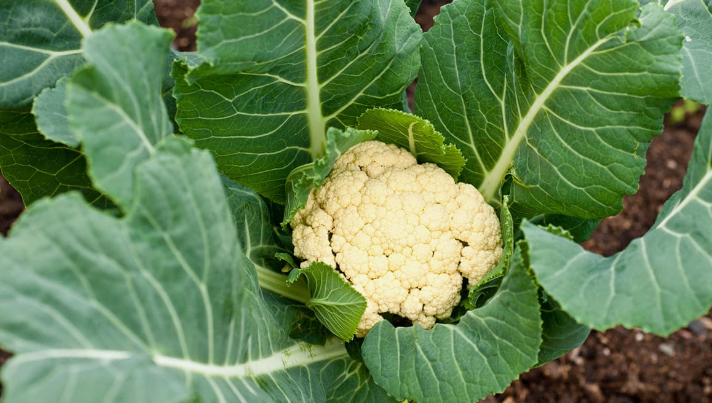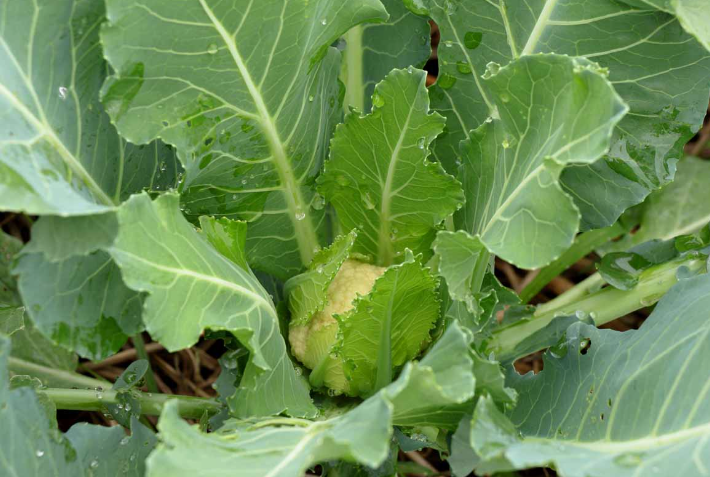5 Reasons Why Your Cauliflower Is Not Forming a Head

Cauliflower has quickly become one of the most beloved vegetables due to its versatility and delicious taste. Unfortunately, cauliflower can be challenging to grow successfully in your garden and produce subpar heads when harvested, if any of them at all.
Cauliflower not forming heads due to stress on its plant. Common sources of cauliflower stress include nutrient deficiencies, temperature fluctuations, insect pressure and tight plant spacing as well as lack of water.
Don’t worry. Let us discuss about cauliflower not heading, or bolted cauliflower. Here are the steps you can take to prevent cauliflower not forming heads. Additionally, we will share which variety is the most suitable to grow for your hardiness zone.
How Long Will Cauliflower Take to Grow?
Cauliflower cultivation takes approximately four months from sowing seeds until harvest time, depending on which variety is chosen for cultivation. You should expect harvest between 65-100 days from initial sowing; with transplants this should occur 45-85 days post planting date.
If you have recently initiated transplants, be sure they have been hardened off first before planting to minimize transplant shock and avoid transplant shock. Hardening-off is the practice of gradually exposing them to their new environment before tending them so as to minimize transplant shock.
Hardening off transplanted cauliflower sprouts is simple; simply place them outside during the daytime before returning them indoors at nightfall for approximately one week and your sprouts should be ready to face the world!
Cauliflower can be an extremely challenging vegetable to cultivate due to its temperamental nature; even minor stressors can lead to cauliflower not heading, or bolted cauliflower, leaving you with lots of leaves that cannot be harvested for any use.
5 Reasons For Why your Cauliflower Is Not Forming a Head
Here are 5 reasons your cauliflower has not formed its head:
Nutrient Depletions
Cauliflower plants are heavy feeders, taking in much-needed nutrients from their soil environment. If planted in soil that lacks essential vitamins and minerals, however, then cauliflower won’t have enough food available to it!
At the start of each growing season, conduct a soil test to assess what’s happening with your soil, particularly with regard to nitrogen, phosphorus,, and potassium (NPK).
These three macronutrients are essential to the healthy development of all plants, and any deficiency could result in stress or stunted growth for your cauliflower.
Before planting, incorporating a thick layer of compost into your beds is an effective way to restore lost nutrients back into the soil. If a soil test identifies any deficiencies, additional fertilizers might also be required; check back with us later for our update!
Each state offers its own version of soil tests and it may be difficult to interpret their numbers. Most states provide instructions for reading test results but if you still require help from an extension agent don’t be afraid to seek their assistance.
Fluctuations in Temperature
Although cauliflowers belong to the brassica family, they don’t take cold temperatures, unlike others. Temperature fluctuations that vary drastically can stress cauliflower plants and prevent them from making heads.
At transition points between spring and summer or summer and fall, days may become hot while nights become suddenly cool – this causes strain on their bodies that ultimately prevents head formation.
Protecting cauliflower plants from colder nighttime temperatures requires using frost cloth such as Reemay. Metal hoops should be used to ensure the cloth doesn’t touch any part of the plant as touching can damage its leaves.
Shade cloth can help keep cauliflower cool on hot days in much the same way frost cloth would: simply drape it over hoops you have set up in your cauliflower row or bed and drape the shade cloth over its edge.
Find something heavy that you can use to hold the cloth in place and maintain its tension, such as sandbags or bricks; sometimes just adding some dirt around its edges works just as well.
As temperatures heat up during the warmer days, cauliflower needs to be kept at an appropriate temperature or it could bolt or go to seed. A plant that bolts often does so because it senses it has reached the end of its life and needs to produce seeds quickly in order to continue.
As soon as your cauliflower begins sending up flowers, you know it has bolted. While you can cut off these blooms to slow the bolting down a bit, once it has begun going to seed there’s nothing you can do about it anymore!

Plants are too close together
Clustered cauliflower plants is surefire way to stress them out! Without room to spread and develop into big cauliflower heads, their development becomes stunted and eventually produces nothing but frustration and failure.
As previously discussed, cauliflowers are heavy feeders; therefore there must be sufficient nutrients available or your plants won’t form heads. As far as water supply goes, I will address that further down this page.
Good spacing for cauliflowers should be 24 inches apart or two feet. Finding enough room can be challenging in smaller gardens, but their shallow root system makes cauliflower an excellent candidate for container gardening.
Not enough water
Cauliflower requires soil that stays consistently moist about 6 inches deep for proper health; otherwise it could dry out quickly and cause disease in its plants. To give cauliflower the best chance for success and ensure optimal growth conditions, always maintain enough water levels in its environment.
Insect pressure
Flea beetles and cabbage worms are two insects that typically prevent cauliflower shows from being completed successfully.
Flea beetles are tiny black insects that love munching away at garden plants, particularly brassicas like cauliflower. You might notice spots all over its leaves that appear like someone took a hand and poked holes, leaving many small holes throughout its greenery.
Cabbage worms are more accessible to spot than flea beetles due to their size. It could be a cabbageworm if you spot green caterpillars about 1″ in length. Also, inspect any cauliflower leaves with holes or damage, as these could contain hidden cabbage worms!
Keep an eye out for any white moths fluttering near your cauliflower, as these could be cabbage moths that lay eggs that hatch into cabbage worms.
One effective method of treating flea beetles and cabbage worms is sprinkling diatomaceous earth (DE). This powdery white substance made up of ground-up aquatic crustaceans and fossils will dry out any pests feeding on your plants while making digestion of any leaves impossible for them.
DE is easily washed away by rain, so be sure to reapply when necessary. A more effective method of controlling insect pests is covering your plants with mesh netting similar to frost or shade cloth, particularly when protecting cauliflower from moths laying more eggs! Keeping out insects could save your crops!
Best cauliflower varieties for your hardiness zone
Locating suitable cauliflower varieties for your hardiness zone is key to having a successful cauliflower harvest. Not sure of where your home is? For guidance, view the USDA Plant Hardiness Zone Map.
Also learn about Do Potatoes Grow Back Every Year? Yes, but Don’t Let Them
Takeaway!
By now, hopefully, you should beware of why did my cauliflower not grow a head. Feel more at ease with your cauliflower-growing abilities. Just remember to provide them with enough nutrients, water, and space as well as protecting them from temperature changes or insects when nurturing these precious seeds.
Ciara Konhaus

I’m Ciara and I’m a gardener and agricultural educator in zone 6b. I’ve farmed and gardened all over the Appalachian mountains and love to empower people with the tools they need to start their own gardens.
